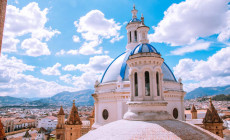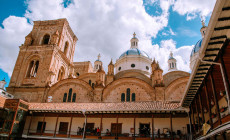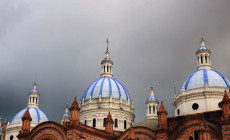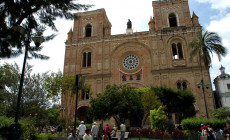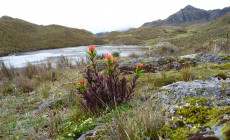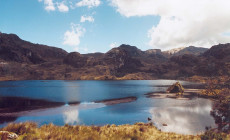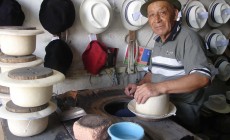-
Latin America
Latin America
- Countries (hidden space)
- Galapagos & Ecuador
- Guatemala
- Mexico
- Panama
- Peru
- Popular Attractions
- Machu Picchu
- Inca Trail
- Easter Island
- Galapagos Islands
- Patagonia
- Rio de Janeiro
- Iguazu Falls
-
Africa
Africa
- Spacer Africa
- South Africa
- Zimbabwe
- Popular Attractions
- Cape Town
- Okavango Delta
- Sossusvlei Dunes
- Victoria Falls
- The Kruger
- The Garden Route
- Masai Mara
-
Asia & Middle East
Asia & Middle East
- Asia
- Borneo (Malaysia)
- Cambodia
- India
- Japan
- Middle East
- Jordan
- Spacer Asia
- Laos
- Sri Lanka
- Uzbekistan
- Vietnam
- Popular Attractions
- Taj Mahal
- Lion Rock (Sigiriya)
- Angkor Wat
- Ha Long Bay
- Kyoto
- Petra
-
Destinations
- Latin America
- Argentina
- Bolivia
- Brazil
- Chile
- Colombia
- Costa Rica
- Galapagos & Ecuador
- Guatemala
- Mexico
- Panama
- Peru
- Asia
- Borneo (Malaysia)
- Cambodia
- India
- Japan
- Laos
- Sri Lanka
- Uzbekistan
- Vietnam
- Middle East
- Jordan
- Southern & East Africa
- Botswana
- Kenya
- Namibia
- South Africa
- Zimbabwe
- Contact Us
-
About
About
Llama Travel provides high quality holidays at the lowest possible prices.
99% recommend us Lower prices - guaranteed Financially protected by ATOL
Declared a UNESCO World Heritage Site in 1999, many Ecuadorians consider Cuenca to be their finest city. Its compact centre, cobblestone streets, beautiful squares and colonial buildings make it very easy to explore and it has a serenity which is rarely found in other Ecuadorian cities. Cuenca is often overlooked on a trip to Ecuador, as many visitors use the mainland as a quick stopover before continuing to the Galapagos Islands. This part of Ecuador, however, gives you a completely different insight into the Andean culture and history.
Cuenca Location
Cuenca, Ecuador's third largest city, is located in the south of Ecuador, around 500 kilometres south of Quito. The journey there is part of the enjoyment. From Quito, you pass through the magnificent Avenue of the Volcanoes towards Riobamba, before continuing through beautiful countryside and traditional villages to reach Cuenca. From Guayaquil, the drive takes you past cocoa plantations, with constantly changing landscapes as you pass from the coastal plains to the southern part of the Ecuadorian Andes.
Cuenca History
Cuenca was founded by the Spanish in 1557, although the city is actually located on the site of Tomebamba, an Inca city. Originally a Cañari settlement called Guapondeleg, it came under the domination of the Inca empire in around 1480, when it was renamed Tomebamba, which roughly translates as ‘Valley of Knives’. Tomebamba, however, was destroyed in the Inca civil war before the arrival of the Spanish. The Spanish made it an important regional centre in the Spanish Crown Colony. Today, virtually nothing remains of the Inca city.
Cuenca Attractions
Cuenca Historic Centre
The city has two cathedrals, both on the main square. The 19th-century new cathedral dominates the skyline, with beautiful sky-blue domes visible from much of the city. The original old catherdral dates from the late 16th century, and is much simpler.
West of Parque Calderón is Plaza San Sebastian with one of the oldest churches in Cuenca. This square is infamous for the murder in 1739 of a member of a French expedition after he was accused of having an affair with a local woman.
To the south of the main square runs the Tomebamba River. Lined with old colonial buildings, it offers a pleasant walk where it is also possible to see washerwomen laying out their clothes on the grassy banks.
The flower market is also very close to the main square and is enjoyable to walk around to catch the colourful locals as well as the flowers.
Museums in Cuenca
The Museo del Banco Central contains displays about the Inca city of Tomebamba and an ethnographic display, including shrunken heads. The Museo de las Conceptas has a large collection of religious paintings and sculptures. The nearby skeleton museum houses an interesting collection of skeletons, ranging from hummingbirds to condors and llamas.
Also worth a visit is one of the factory shops in Cuenca makings panama hats. Cuenca is one of the centres of Ecuador’s panama hat industry.
Cajas National Park
20 miles from Cuenca is the Cajas National Park, an area of wilderness, with hills and lakes. Ranging between 3,000 metres and 4,500 metres, the park contains many beautiful polylepis trees and is great for trekking and bird watching. The park can only be visited with an accredited guide.
Ingapirca
Between Alausi and Cuenca is Ingapirca, the most important archaeological site in Ecuador. The Incas occupied the site in the late 15th century, building over the existing Cañari site. Ingapirca contains an impressive structure known as the Temple of the Sun, which contains fine Inca stonework in an elliptical building.
If you would like to explore Ecuador’s most beautiful colonial city with Llama Travel, contact us to plan your holiday to Ecuador.

